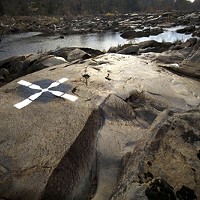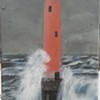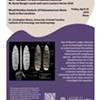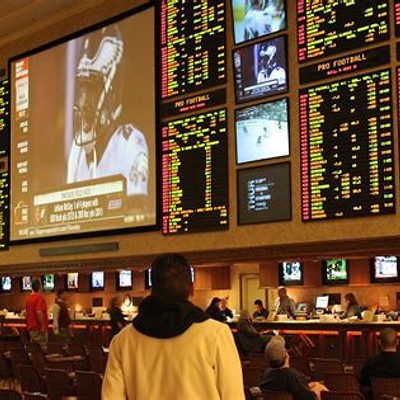Death to Halloween
As the longtime American tradition becomes more commercialized, will Charlotteans turn to el Día de los Muertos?
By Karen ShugartJohn Hairston Jr. is standing in front of a painting at Pura Vida, the hip cross-cultural shop, gallery and performance space on Central Avenue. "I've always wanted to celebrate it," says Hairston, an artist, as he looks at the death-themed art that might appear macabre to the unknowing eye. "I've always had a thing about death."
"It," to Hairston, is the celebration of the Mexican tradition of Día de los Muertos, or Day of the Dead. Inside Pura Vida, one of the more diverse hot spots in Charlotte, Hairston and dozens of others have gathered for an early commemoration of the three-day celebration, which allows the living to honor the dead through festivities at once somber and joyous between Oct. 31 and Nov. 2. But the crowd gathered on this night appears to be mostly white, privileged and of an intellectual bent.
Contrary to popular belief among some North Americans, el Día de los Muertos is not an exercise in the morbid or the grotesque, even though the tradition's chief symbols include skulls and skeletons. But Hairston is a longtime fan of the tradition, and to some degree he has been ever since he learned about the Day of the Dead in elementary school.
"It's almost like a Christmas kind of holiday, where it's sacred and it's religious," he says. "I thought it was really neat."
Reaching the rest of Charlotte, however, may take a little bit longer. After all, most longtime Charlotteans probably see el Día de los Muertos more in terms of Halloween.
In 1990, Mecklenburg County was home to fewer than 7,000 Latinos, a diffuse number that didn't necessarily encourage the widespread flowering of new customs. But ten years later, Latino residents numbered nearly 49,000 -- a population boom of 570 percent that made Charlotte a more fertile ground for new and changing traditions. Much of the population boom has been attributed to people from Mexico, one of the handful of countries that observe el Día de Los Muertos.
That doesn't mean it's been easy to find people around here who celebrate it. Annabel Manning, who came to Charlotte from Mexico after 17 years in New York City, misses the festivities and likeminded celebrants she's found elsewhere. Manning continues to adorn her home with the bright colors of papel picado, the decorative banners of tissue-paper cut-outs strung in homes and cemeteries during el Día de los Muertos. She wishes she knew more people who did the same. "I'm always looking for people to celebrate with," she says as she walks around Pura Vida.
Día de los Muertos has been taught as a cultural event in many schools for years. And the tradition has not gone unnoticed in the arts community. In 2002, about four years after Pura Vida co-owner Teresa Hernandez moved here, the Levine Museum of the New South asked her to set up an ofrenda, or altar, for the holiday. The next year, another museum called Hernandez. She was elated that word was spreading.
But until last year, when the Latin American Coalition sponsored a small event attended almost exclusively by Latinos, Charlotte scarcely had a public celebration. This year's event -- held Saturday, Oct. 29, from noon to 6pm at the corner of Central and Thomas avenues -- is expected to be bigger and more diverse. "We're hoping it will be more of a place where two cultures can really connect," says Jess George, associate director of the Latin American Coalition. "We live in an extremely diverse city, but we don't always see the diversity right in front of us."
Other cities with longer histories of Mexican American populations, particularly those in Texas and California, have been celebrating Día de los Muertos prominently for years. So much so that it's prompted complaints that the holiday has been co-opted and commercialized, and that its religious roots have been diluted and death imagery made marketable. Given its place on the calendar, Day of the Dead has been intractably linked in this country to Halloween, much to the chagrin of those who point out the huge spiritual and philosophical differences.
"Halloween is supposed to be scary," says Hernandez, who celebrates both holidays. "Day of the Dead isn't. The holiday connects family. It's not about getting candy or getting in costume."
Still, the seemingly unshakable link between Day of the Dead and Halloween has drawn backlash in some quarters. As the popularity of Día de los Muertos spreads to new areas of the US along with the Latino population, the tradition loses its spiritual intimacy much like Christmas has lost its link to the Christian tradition. Even in some areas of northern Mexico, where schoolchildren are apt to celebrate Día de los Muertos and Halloween side-by-side, the clash has led some schools and towns to ban trick-or-treating. On both sides of the border, some Mexicans and Mexican Americans have criticized what they see as a bastardization of their culture. The next step could be Day of the Dead sales at Wal-Mart.
Other traditions that are relatively new to the United States
Kwanzaa: The festival was created in 1966 by Dr. Maulana Ron Karenga, who wanted a holiday that would help African-American goals of strong family, history and unity.
Cinco de Mayo: Really, it's not just an excuse to drink any more than St. Patrick's Day is. Cinco de Mayo is intended to commemorate the Battle of Puebla in 1862, in which Mexican troops defeated Napoleon. Not to be confused with Mexican Independence Day, which is September 16.
Speaking of 5.00000
-
A Family Affair
Dec 12, 2007 -

What If the Water Runs Out?
Dec 12, 2007 -
Body Talk
Dec 12, 2007 - More »
Latest in Cover
More by Karen Shugart
-
Mecklenburg and beyond ...
Feb 10, 2009 -
Mecklenburg and beyond ...
Feb 9, 2009 -
Mecklenburg and beyond ...
Feb 6, 2009 - More »
Calendar
-

NEW WINDOW GALLERY-Pat Rhea-ACRYLIC PAINTINGS-April 05-30 2024 VALDESE, NC 28690 @ New Window Gallery/Play It Again Records
- Through April 30, 12 p.m.
-

TheDiscountCodes
-

"Blood Residue Analysis of Paleoamerican Stone Tools in the Carolinas" @ Native American Studies Center
- Fri., April 26, 12-1 p.m.
-

Brightfire Music and Arts Festival @ GreenLife Family Farms
-

ARTS RENAISSANCE, a GALA supporting the ARTS in South Carolina @ the Columbia Museum of ART
-
5 Online Player Communities to Join in Michigan
-
A beginners guide to online sports betting in the US
-
I Changed my Sex. Now What?
Scott Turner Schofield's rapid transit to a new identity










